
After the hybrid and the plug-in hybrid, this 100% electric version of the Kia Niro completes the Korean manufacturer’s crossover range. It remains family-friendly and fairly versatile and is by far the most fun to drive in its 204 hp variant.
Test car: Kia e-Niro e-Premium 204 hp
|
From€ 46,500
€ 6,000 bonus
|
Even though the Hyundai Ioniq has had his politeness toast, the Kia Niro is today one of the first vehicles to be available in both hybrid, plug-in hybrid and now 100% electric. It is also the only one in its category: that of family crossovers. This exclusivity can be considered an asset but it is above all its engine, which it shares with its cousins Hyundai Kona Electric and soon Kia Soul EV, which should ensure a certain success.
“3,000 Kia e-Niro are planned for France in 2019“
The electric powertrain revolves, as on the Kona, around two battery offers, each associated with a motor powerr
- a “small battery” of 39.2 kWh and a power of 136 hp.
- a “big battery” of 64 kWh and a power of 204 hp.
The latter will represent the bulk of sales in France. Kia speaks of a market share of 95% to 98% in 2019, or at least 2,850 models on 3,000 e-Niro planned for France. Logically, it is therefore the 64 kWh version that we have tried on the winding roads of the French Riviera.
TO READ. Kia Niro electric test: the truth about its autonomy
Driving the Kia e-Niro
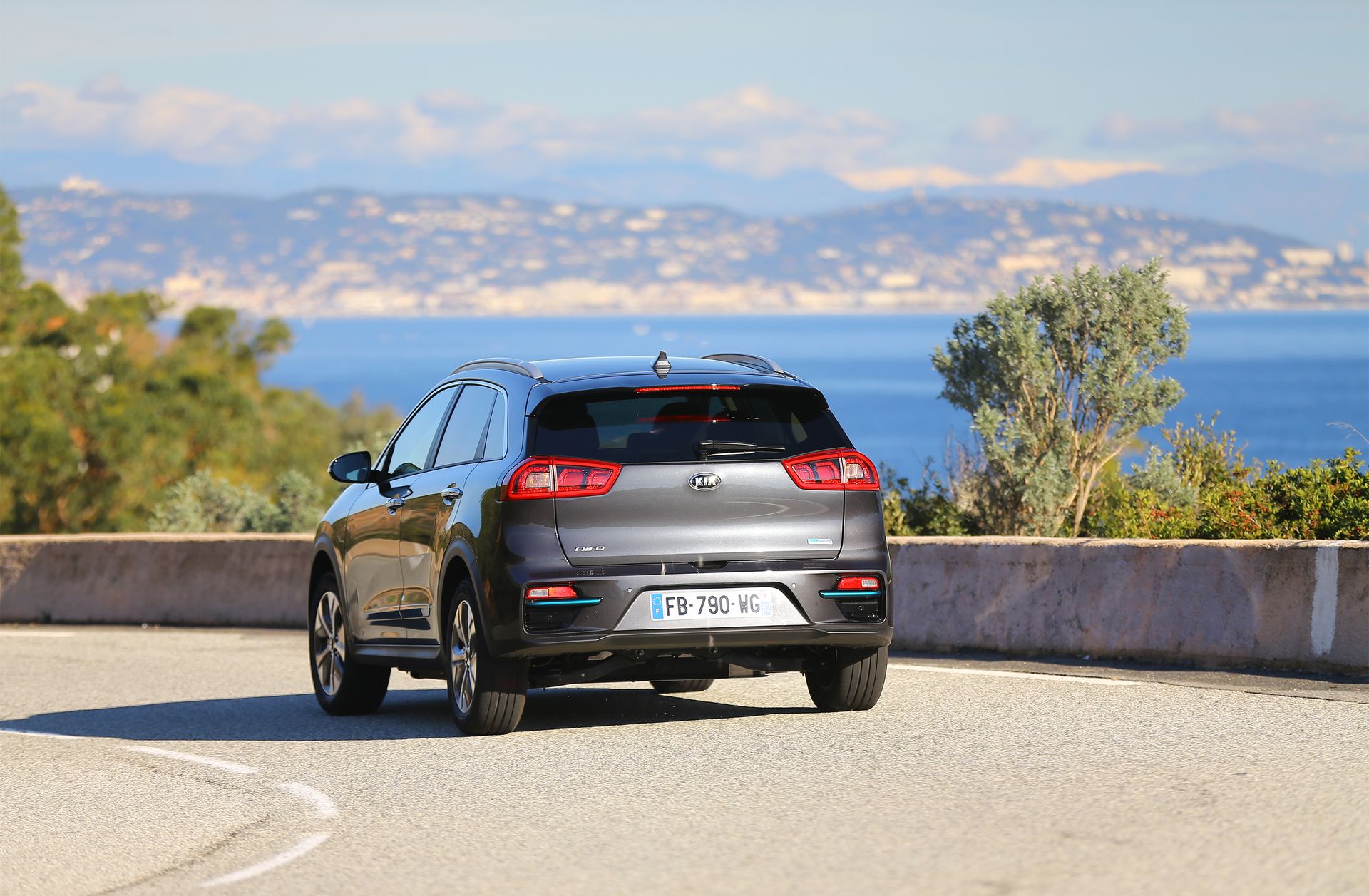
So aesthetically it shows itself less manly than the stars of the segment (Peugeot 3008, Volkswagen Tiguan), the e-Niro reverses the trend when you are behind the wheel. We had been seduced by the pep of the Hyundai Kona Electric, and it’s the same here, notwithstanding a larger size and a respectable weight of almost 1,800 kg in this high-end e-Premium finish.
With the 395 Nm, available from the start, it grows, as evidenced by the chrono of 7.8 s to go from 0 to 100 km / hThe good news is that the tire (Michelin Primacy 3, 215/55 R17) takes the cavalry well. It does not squeal too much when accelerating or cornering even though torque effects are felt in the steering wheel. Because the e-Niro is able to sustain a high pace on small roads: precise steering, powerful and progressive braking (almost a tour de force for an electric vehicle), no roll taking. There is only the flirtatious weight that tempers the ardor of sport in the pins. The best part is that this car was not designed for that. Remember that its primary vocation is family! And on this point the contract is perfectly fulfilled.
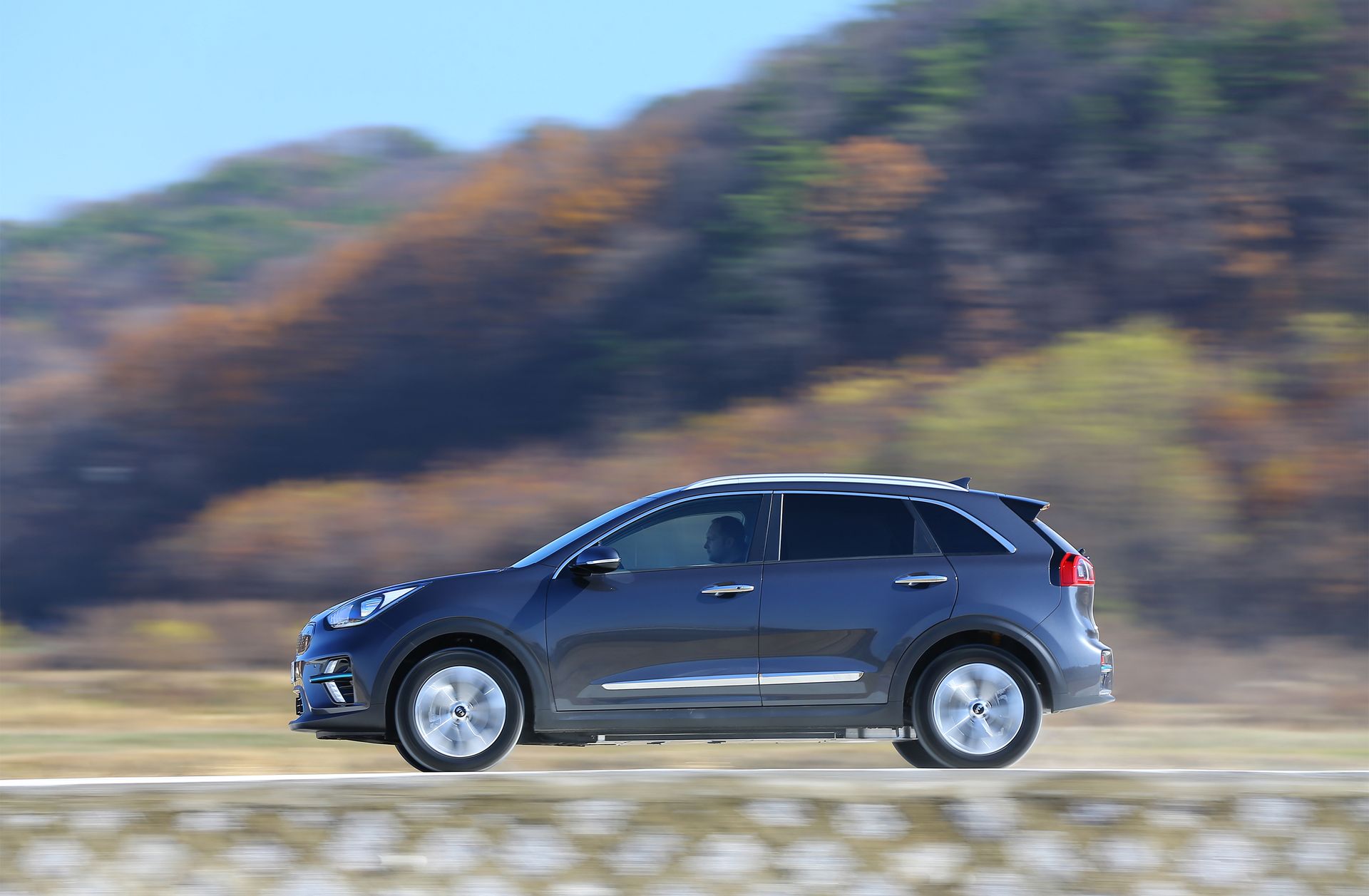
To begin, the silence is remarkable, even at 130 km / h on the motorway. The body, 20% more rigid than that of the Niro hybrid, also helps to curb any vibration. Finally, the suspension has found a subtle balance between handling and softness. Even speed bumps, which are the Achilles heel of electric vehicles, are swallowed without too much reaction. And what is valid for the front seats is also valid for the rear seats, which is not the case, for example, for the Renault Zoe. At the rate of “good father”, the e-Niro is also very pleasant to drive. A kind of quiet force …
“The revivals are particularly vigorous with an 80 to 120 km / h in 5 s.“
As with the other electric vehicles of the group, you can configure the driving. First of all by adjusting the level of energy recovery during deceleration using the paddles located on either side of the steering wheel. Zero corresponds to freewheeling, 3 to real electric braking (0.25 G) which almost eliminates the need for the brake pedal.
You can also select 4 driving modes : sport, normal, Eco and Eco +. The last two reduce the available torque, limit the electrical consumption of the peripherals, the response of the “gas” pedal, as well as the top speed (90 km / h maximum in Eco +). The goal is obviously to increase autonomy, which is already one of the strengths of this electric vehicle.
Consumption, range and charging of the Kia e-Niro
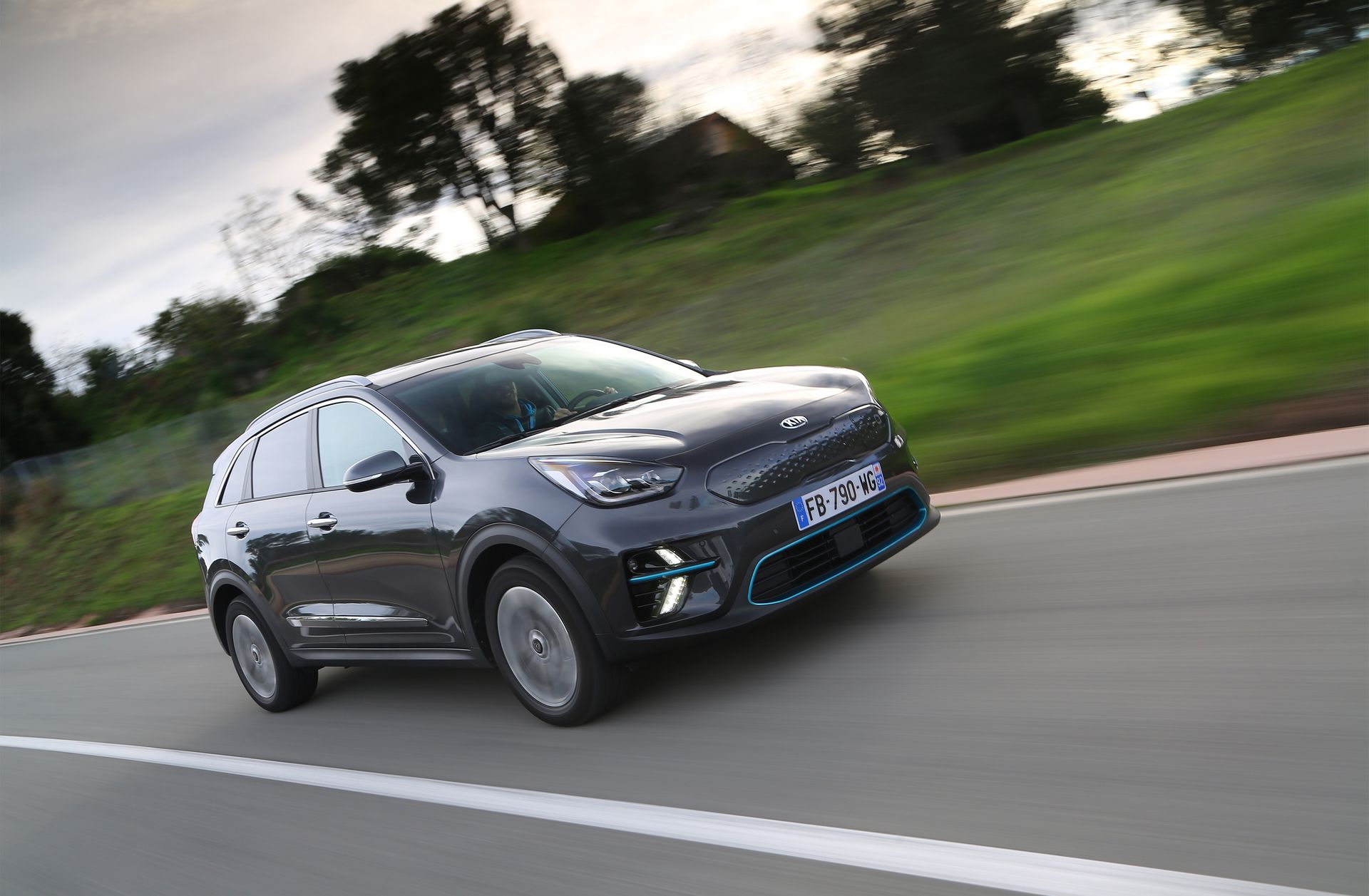
Initially, Kia communicated on a WLTP cycle range of 485 km. It was a little optimistic and due to an error during the homologation simulations. In fact, the official radius of action is 455 km in mixed cycle and 615 km in the urban cycle with the 64 kWh battery. It is perfectly realistic. On our test route with the highway, the city and the small mountainous road, without sparing the car, we consumed exactly 16.1 kWh / 100 km on average, which corresponds to a real autonomy of 397 km.
On the highway, at 130 km / h, the average consumption is 24 kWh / 100 km, i.e. 266 km of autonomy. For those who find this high, remember that this corresponds to 2.2 l / 100 km of diesel! Which diesel does better on the highway? What’s more, pollution-free …
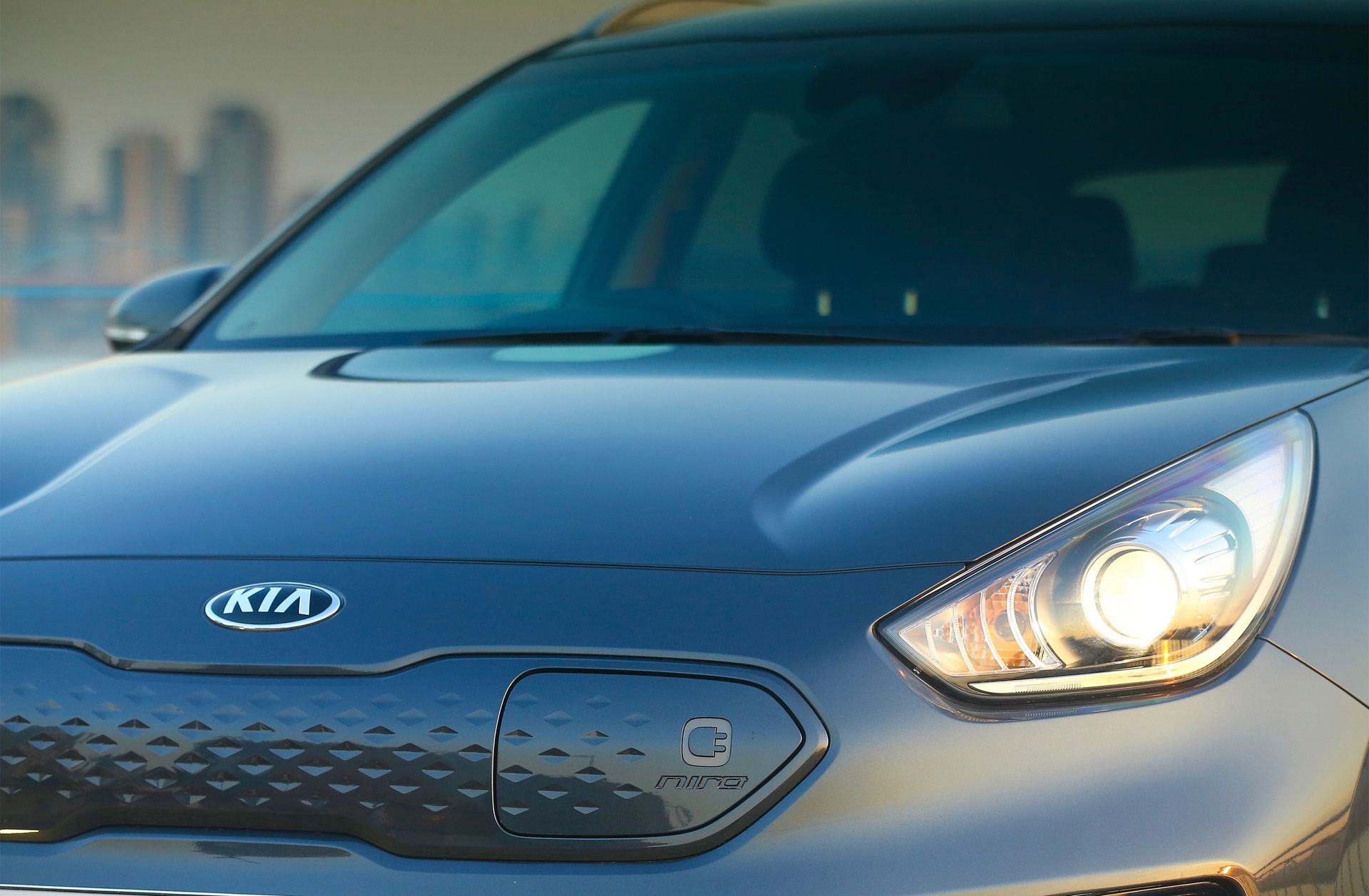
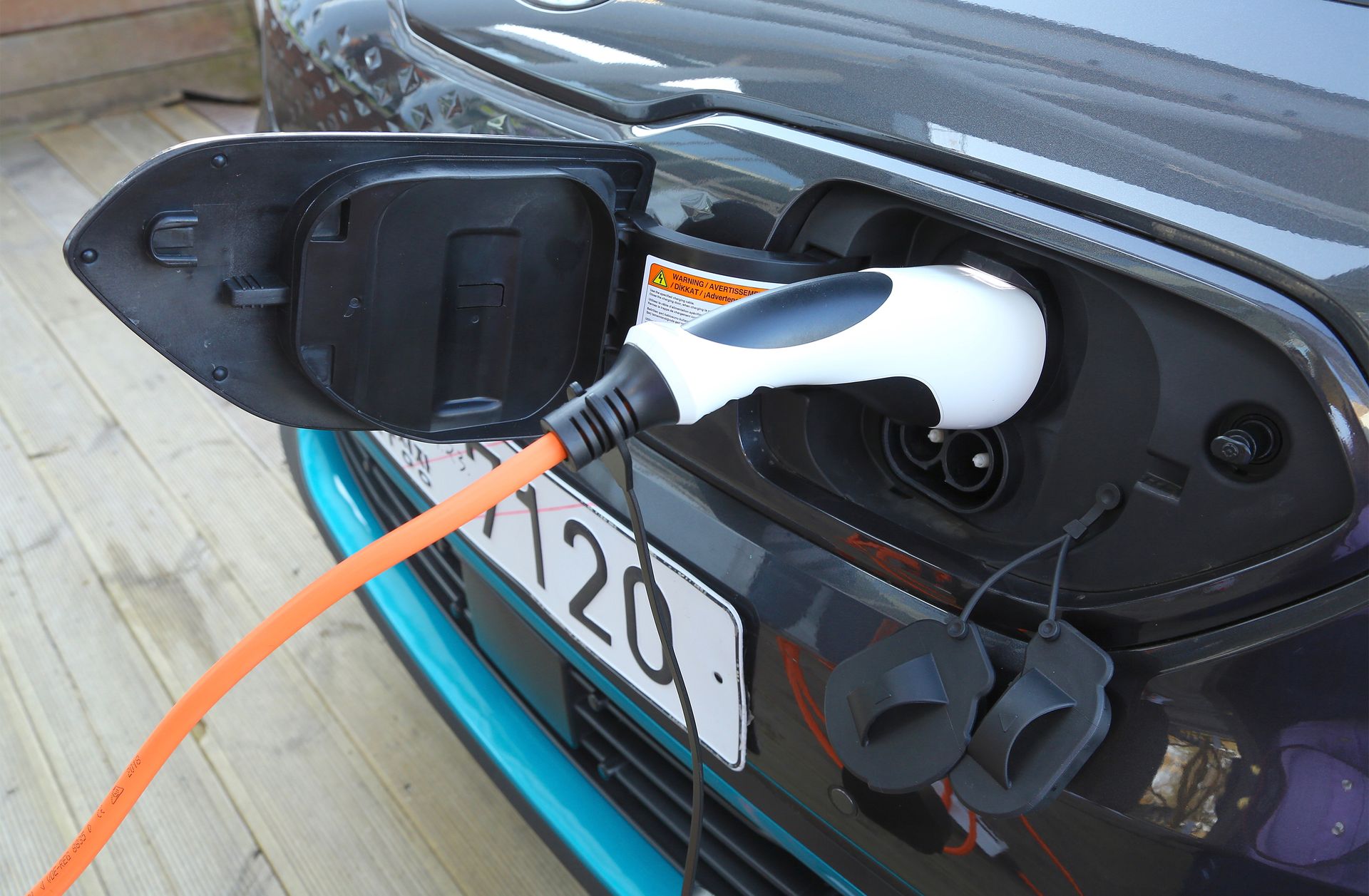
The e-Niro also offers interesting charging possibilities. Thus on a single-phase alternating current terminal with a power of 7.4 kW, we recover (power consumption 7.2 kW) 100 km of autonomy in 2 h 30. On an Ionity terminal (rare in France), the charging rate climbs to 77 kW, which makes it possible to recover 100 km of autonomy in 15 minutes. Ultimately, the engineers told us that the battery could handle a power of up to 170 kW, which means “full” (20 to 80% charge) in less than half an hour.
Kia e-Niro price


In France, the range revolves for the moment (it is not excluded that the “small battery” version will disappear from the catalog in 2020) around two battery capacities and three finishes.
|
e-Active |
e-Design |
e-Premium |
|
|
39.2 kWh – 132 hp. |
€ 38,500 |
€ 40,500 |
|
|
64 kWh – 204 hp. |
€ 42,500 |
€ 44,500 |
€ 46,500 |
At first glance, the prices may seem high, but you have to put it into perspective. Equal equipment, the e-Niro is only € 2,250 more expensive than a plug-in hybrid Niro and it benefits from a ecological bonus of 6,000 € minimum. Finally, if we compare to electric vehicles capable of traveling more than 400 km in real conditions, apart from its cousin Hyundai Kona Electric, it is necessary to pay more than 78,000 € for a Jaguar i-Pace, more than 89,000 € for a Tesla S and € 59,300 for the new Tesla 3. Kia France also offers a long-term rental offer quite attractive to 397 € / month over 49 months with 10,000 km per year and a contribution of € 1,150 (government bonus and conversion bonus deducted).
On board the Kia e-Niro
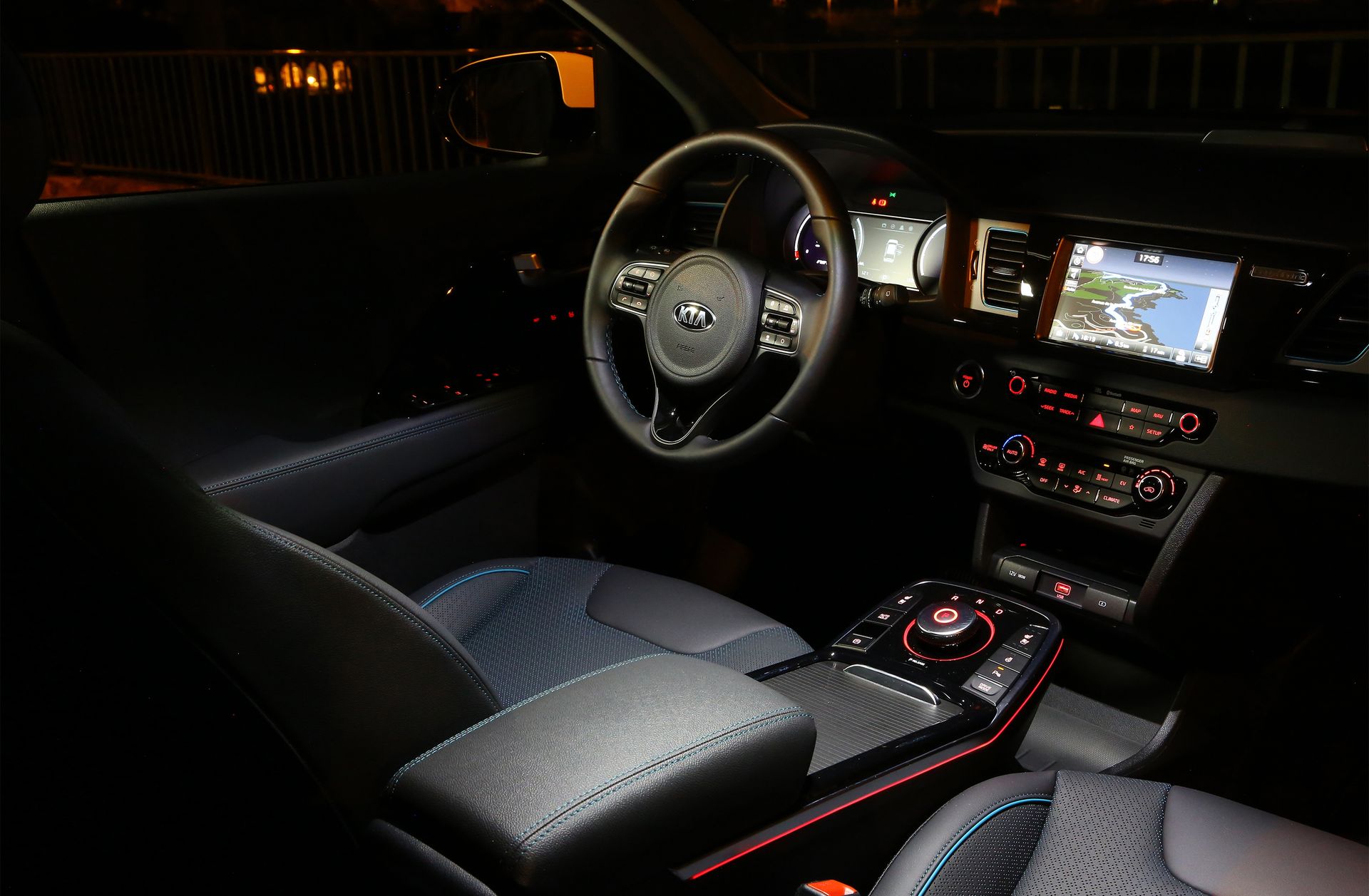
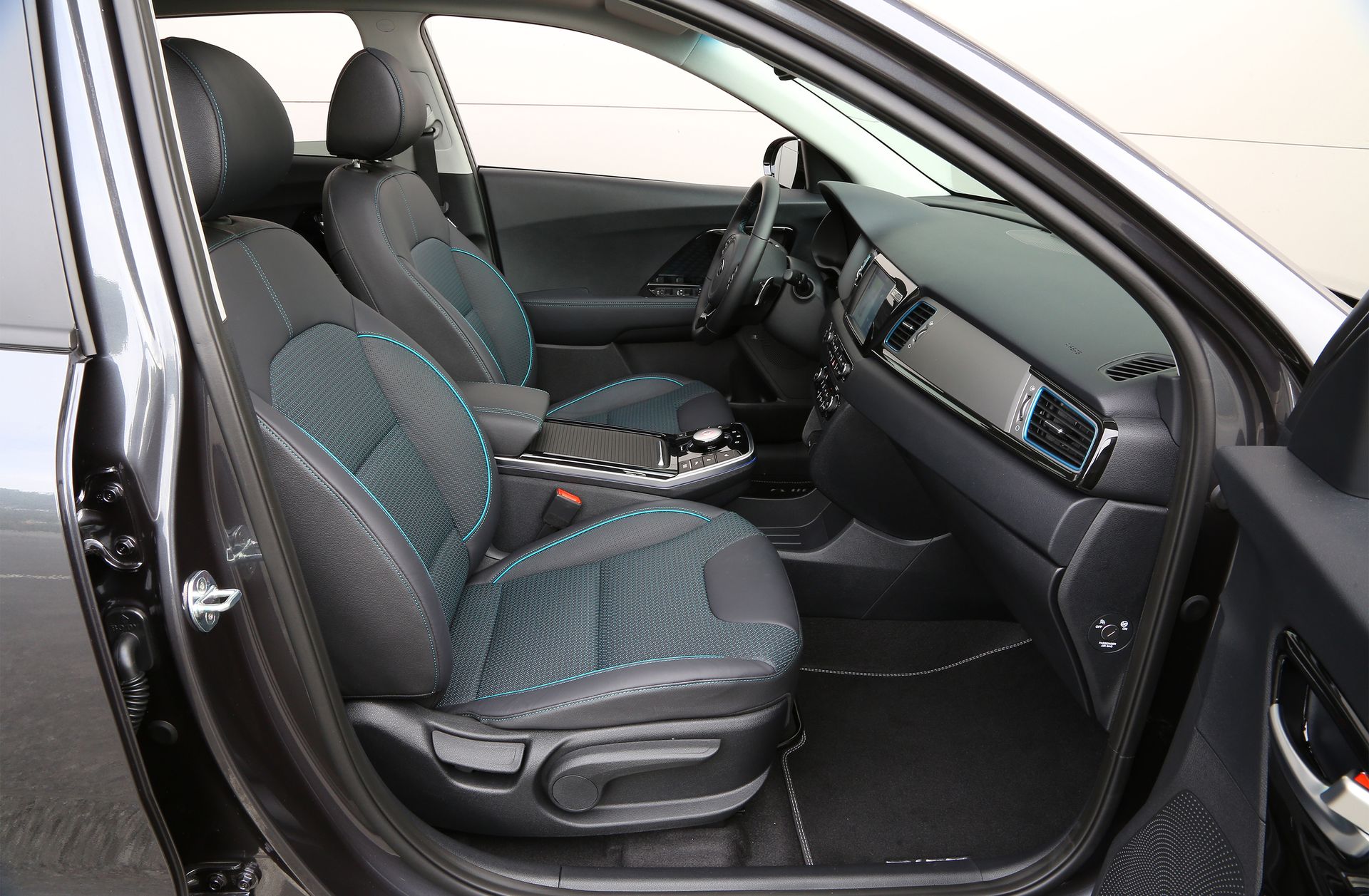

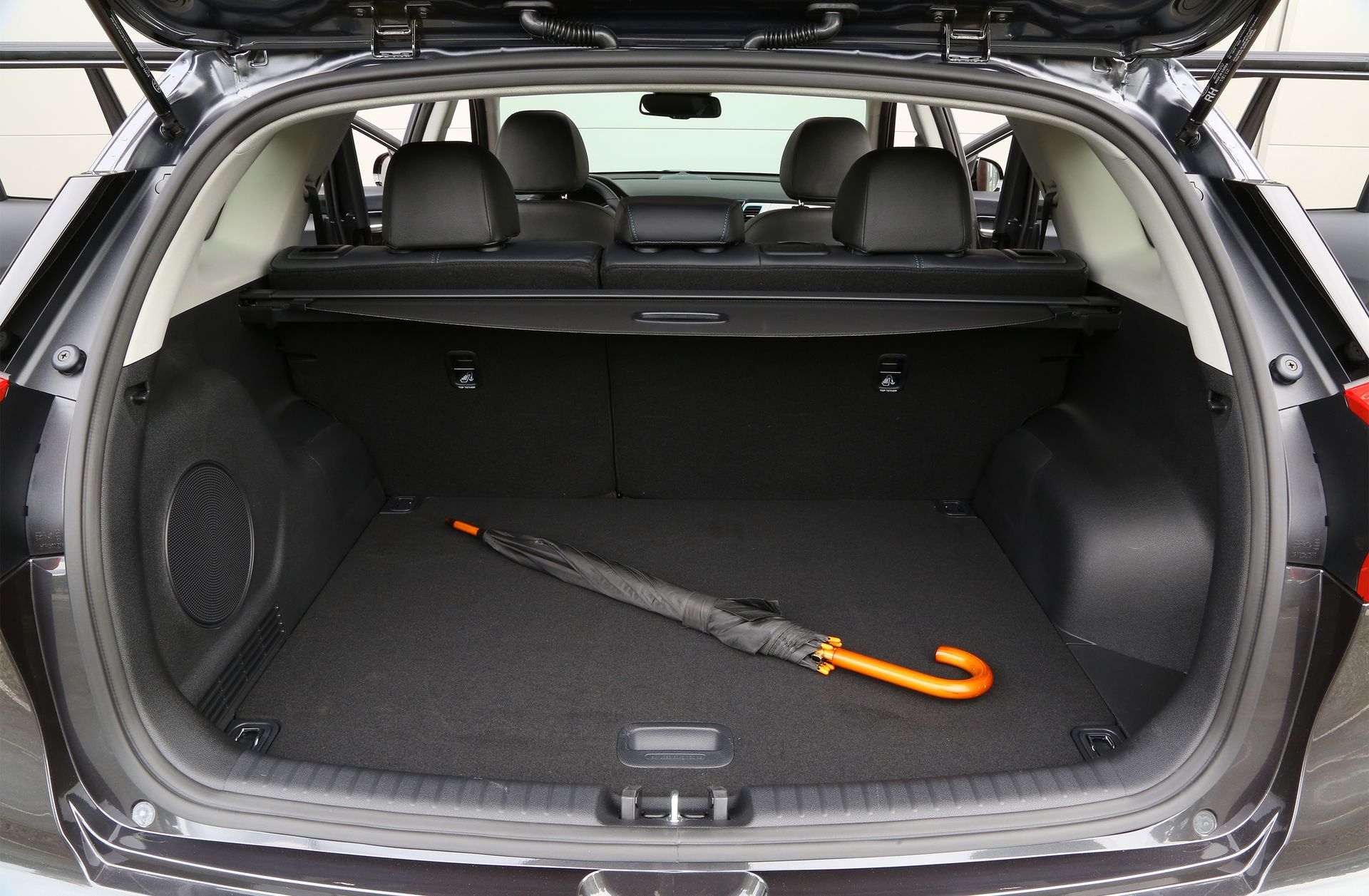
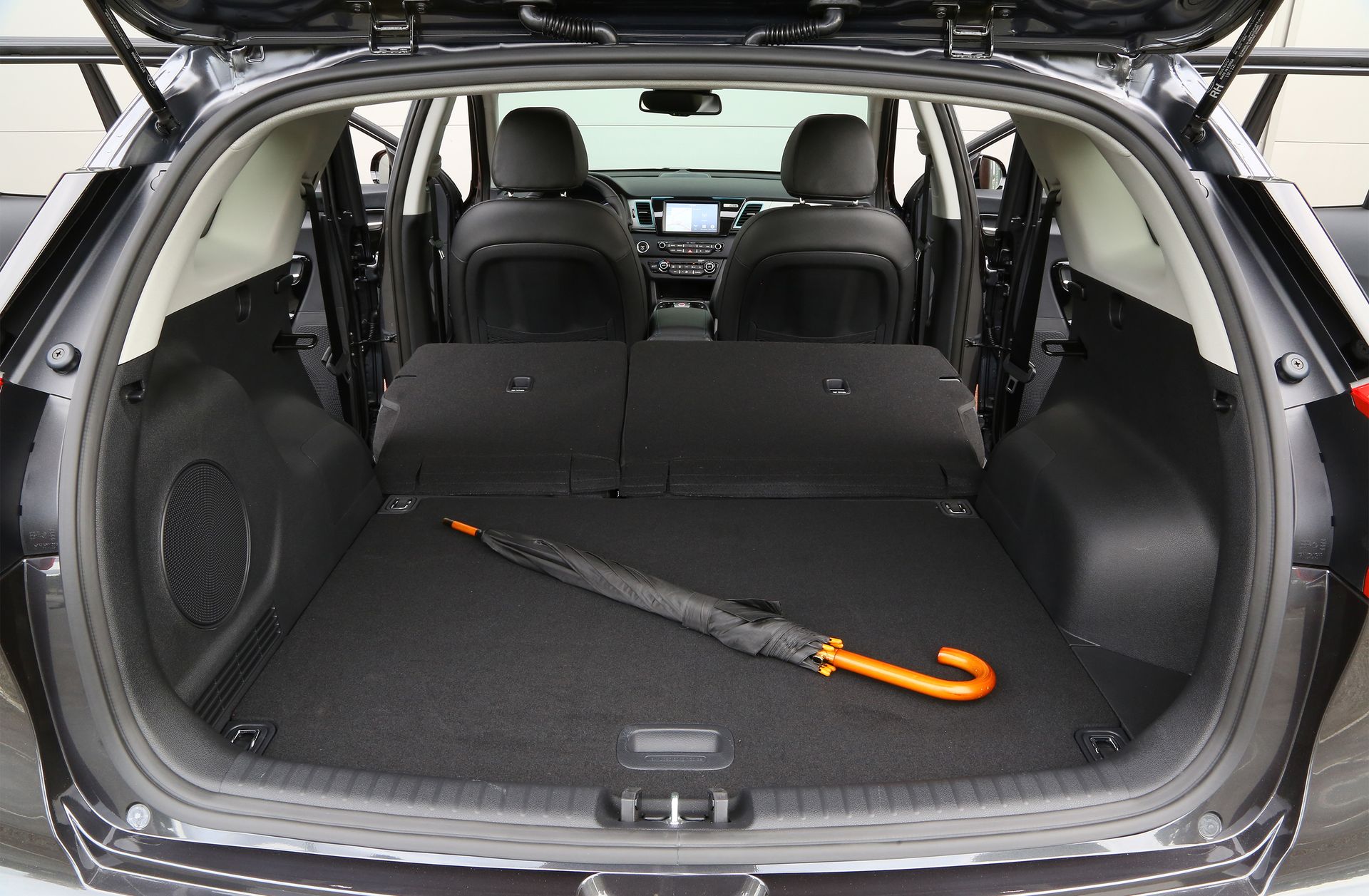
Competition Kia e-Niro
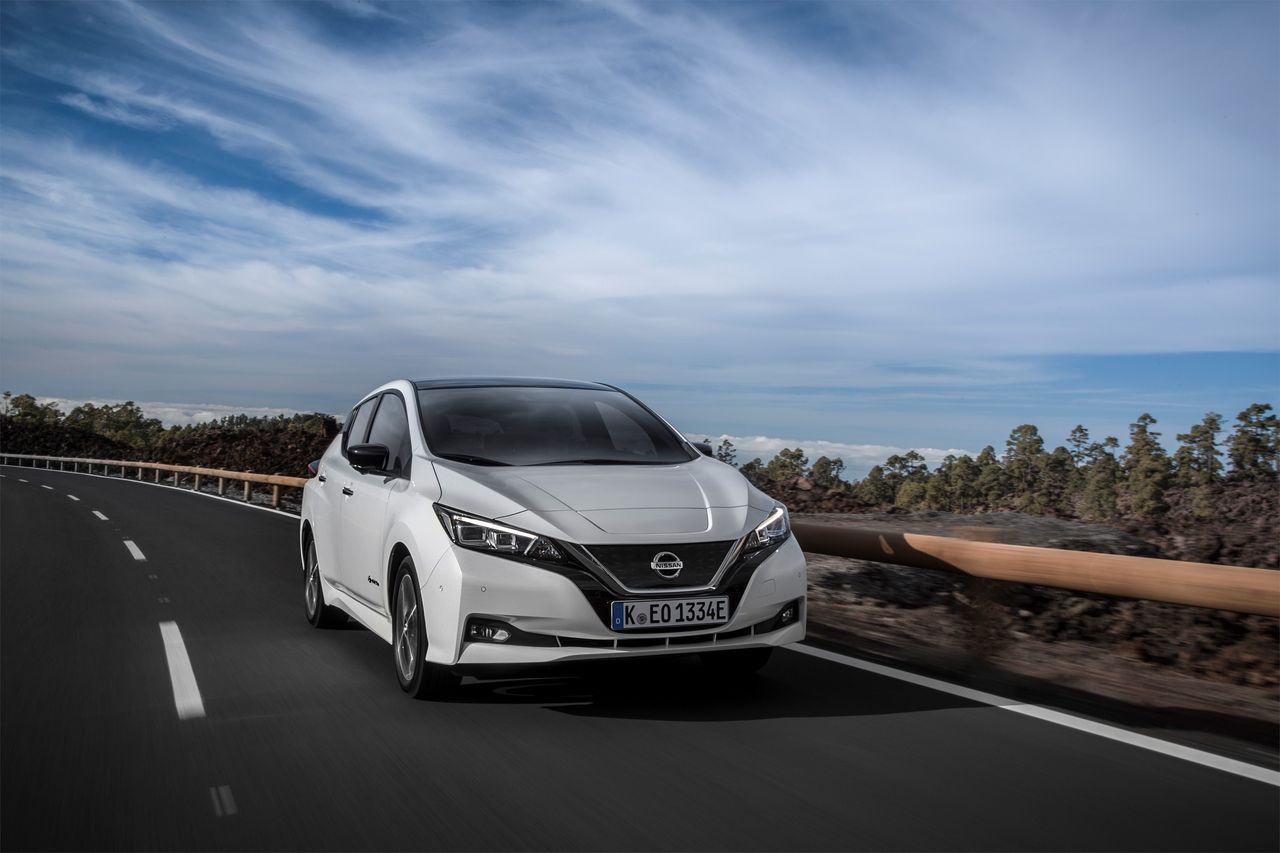
There is for the moment no other 100% electric family crossover on the market. The Kia Soul EV and Hyundai Kona Electric, with the same powertrain, are smaller and the Volkswagen ID Cross, positioned in a close niche, will not arrive before 2020.
The only family alternative existing today, at a similar price, is the Nissan Leaf 2. The Japanese is longer (4.49 m vs 4.37 m), but yet leans in space (especially in the rear seats) and in boot space (435 l vs 451 l). The Korean also offers the choice of two engine powers, associated with two different battery capacities when the Nissan offers a single power (150 hp.) And a 40 kWh battery.
However, even in its base configuration, the e-Niro charges more for its charms. With the small battery, the offer starts at € 38,500 in the e-Active finish, while a Leaf 2, a little better equipped, only claims € 35,900 in the Acenta version. The rate is even higher with the e-Niro 64 kWh which appears from € 42,500 for services, it is true, much higher.
Kia e-Niro 64 kWh test report
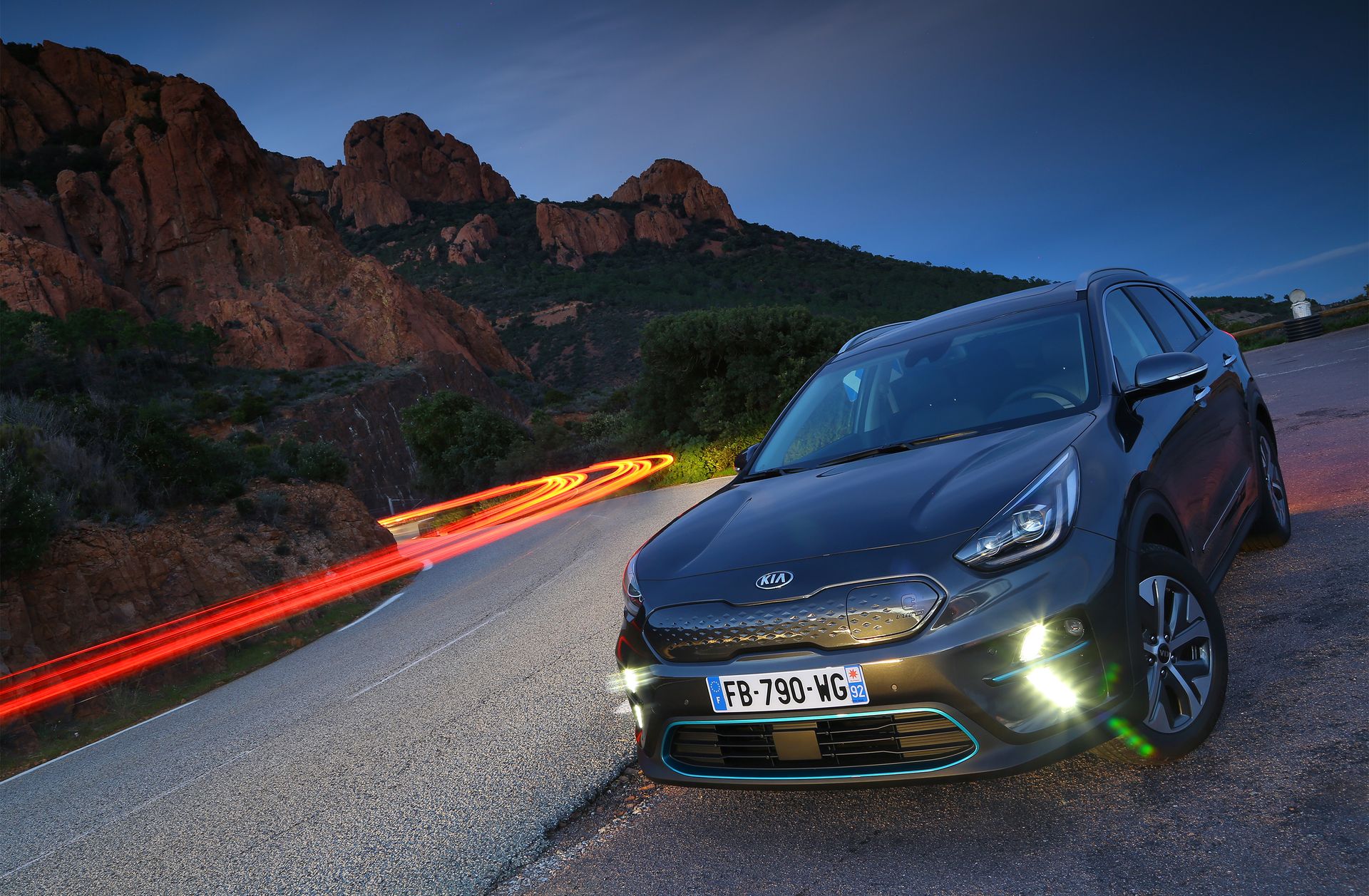
The Kia e-Niro brilliantly demonstrates that the electric vehicle is not a renunciation. With him, the family does not renounce practical aspects, comfort or roominess. The driver does not give up driving pleasure or performance either, on the contrary! No need to strain your budget either compared to the plug-in hybrid version thanks to the ecological bonus. Finally, with 270 km (motorway) to 600 km (city) of autonomy and ultra-fast charging, we will not give up the vast majority of journeys either.
WE love
- Engine tone
- Comfort
- 400 km of real autonomy
- Ultra-fast charging possible
- Habitability / trunk preserved
We regret
- Sometimes intrusive driving aids
- Imperfect ZEV navigation

















